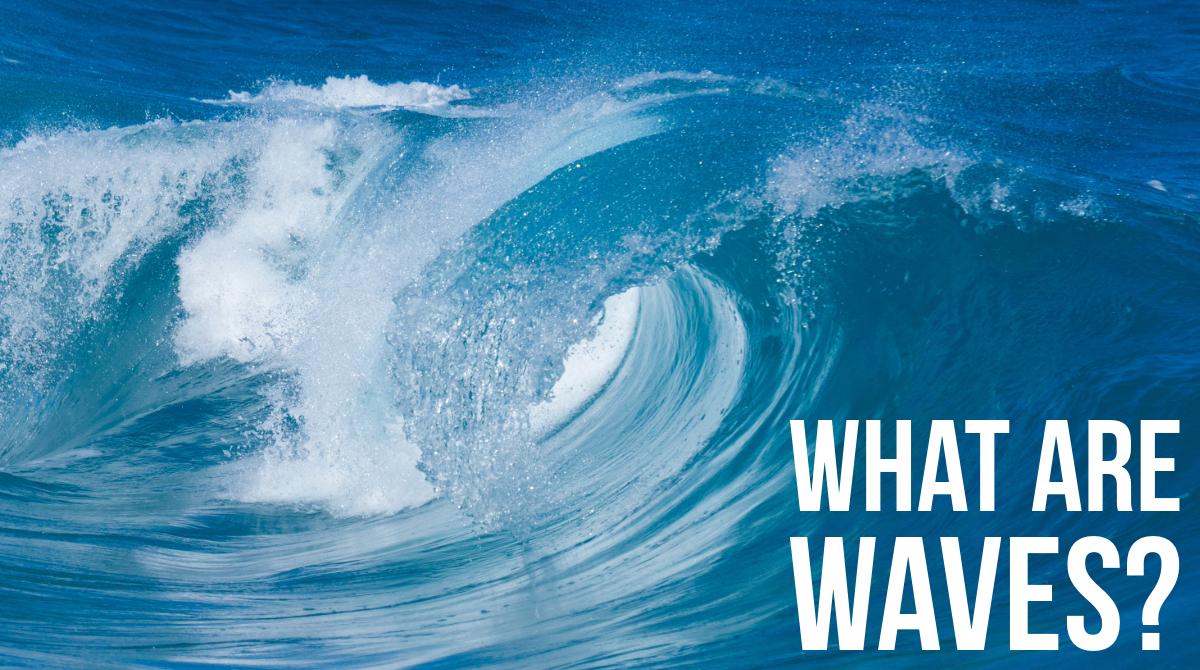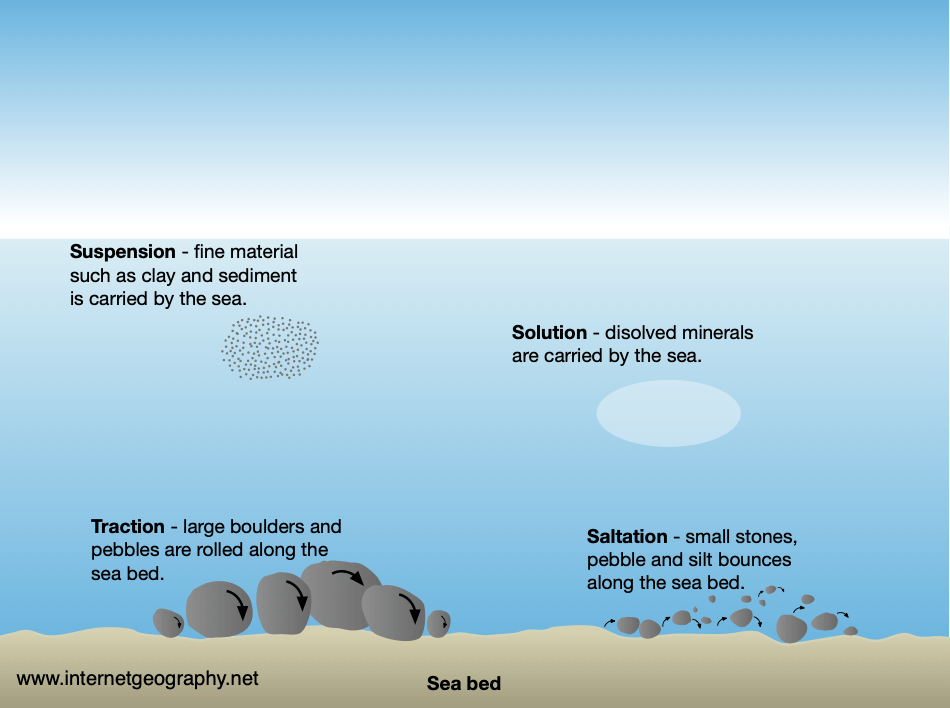What is coastal transportation?
Coastal transportation is the movement of material in the sea and along the coast by waves. The movement of material along the coast is called longshore drift.
Although longshore drift is the main process of transportation, the material moves in four different ways. These are:
- traction
- saltation
- suspension
- solution
Traction involves large pebbles and boulders being rolled along the seafloor. High-energy destructive waves are most likely to transport material by traction.
Saltation involves small stones, pebbles, and silt being bounced along the seafloor. Both destructive and constructive waves can move this smaller material by saltation.
Transportation by suspension is when fine particles of clay and sediment are suspended in the sea and transported by both destructive and constructive waves.
When material is dissolved and carried by the sea, it is transported in solution.
The video below shows transportation in action on a beach at Flamborough. Can you identify the processes of transportation?


